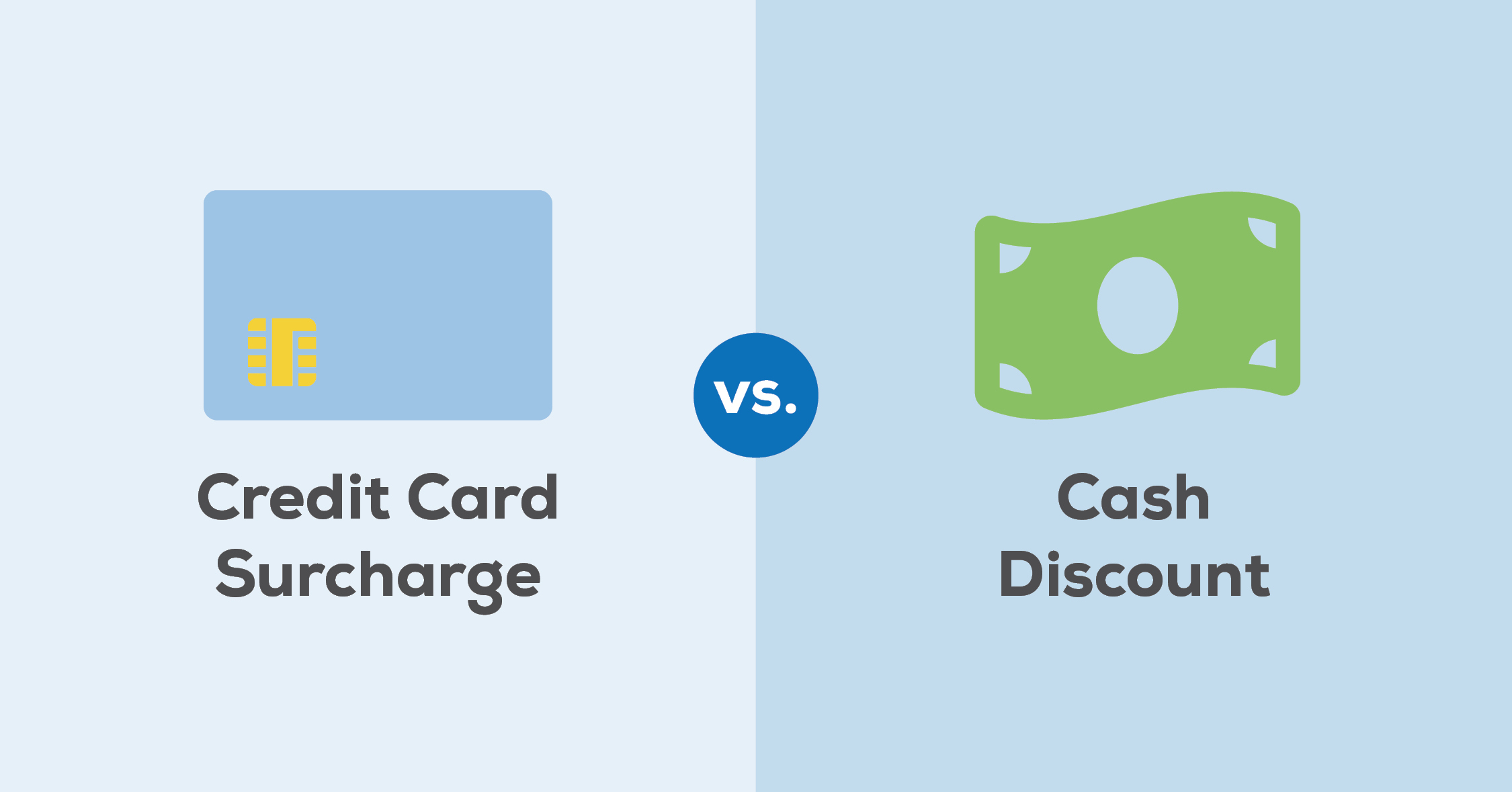- Details
- Published: Tuesday, 21 September 2021 19:29
- Written by Oliver Stephenson
Cash Discounting - How to Avoid Penalties
Understanding Surcharging and Cash Discounting

Cash discount and surcharge programs have grown increasingly popular over the past couple of years. Before implementing either program, business owners should understand the key differences between both programs to ensure they are on the right side of the law and avoid card brand regulatory compliance issues, which can result in fines and other penalties assessed by the card brands.
The rules and requirements outlined on this page are stipulated by the card brands and apply to all processors.
Surcharge vs. Cash Discount - What's the difference?
Surcharge is a fee added to a credit card transaction to offset credit card processing costs. The customer pays more than the advertised price for paying with credit card.
Cash Discount is a discount applied to the total amount when a customer pays with cash. The customer pays less than the advertised price for paying with cash.
If you’re adding a fee at the register, whether you call it a “service fee” or a “non-cash fee”, it is a surcharge. As Visa put it: A merchant is permitted to offer discounts for paying in cash, however, the discount must be given as a reduction from the standard price.
Surcharge vs. Convenience Fee or Service Fee - What's the difference?
Convenience Fee is a fee added to a transaction for the convenience of paying with an alternative payment channel that is not standard for the business. For example, movie theaters may charge a convenience fee to pay for tickets online. The fee is not charged when paying in person at the ticket booth because this is the standard payment channel. Note: Each card brand has their own set of rules for compliantly assessing a convenience fee.
Service Fee is a fee added to a transaction for providing a service and is limited to certain merchant categories (education and government merchants).
How do I implement a cash discount program?
There are no registration or regulatory requirements for cash discounting and it is legal in all 50 states when implemented correctly.
Examples of cash discount programs include:
- Using a dual pricing model with cash prices and credit/debit prices (commonly seen at gas stations). Some point-of-sale systems offer this functionality built into the software.
- Advertising credit prices and offering a discount if paid with cash. This is the most straight-forward method of cash discounting.
Commonly used but could be considered a non-compliant program:
- Disclosing a customer service charge at the register and waiving it if the customer pays with cash.
How do I implement a surcharge program?
The first step is to reach out to Payment Logistics to notify us of your intent to surcharge, as the card brands require 30 days advanced notice before you begin surcharging. Additional requirements as stipulated by the card brands include:
- Proper signage disclosing the surcharge is required at the business point of entry and point of sale.
- Surcharge can only be assessed to credit transactions. Prepaid card and debit card transactions, including debit card transactions for which the cardholder using a debit card selects “credit” on the POS terminal (also known as signature debit), cannot be assessed a surcharge.
- Surcharge amount must not exceed the cost of acceptance (your true credit card processing cost) or 3% of the transaction total.
- Surcharge total must be itemized as a separate line item on the customer's receipt.
- The surcharge amount must be included in the authorization request and in settlement.
Note: Surcharging is prohibited or limited in some states.
To notify us of your intent to surcharge and begin the process to compliantly set up a surcharge program, click here.
Do you have questions about your options or your processing costs? We're here to help you.
The statements contained herein are based upon the information available as of the date and time this page was created and are subject to change. We recommend you seek legal advice to ensure compliance with local, state, and regulatory rules and regulations.


